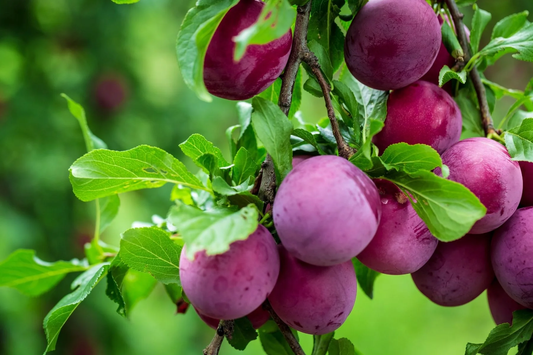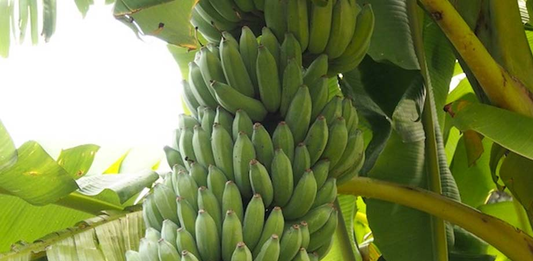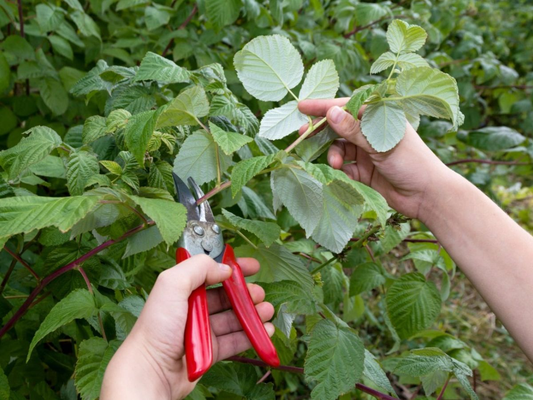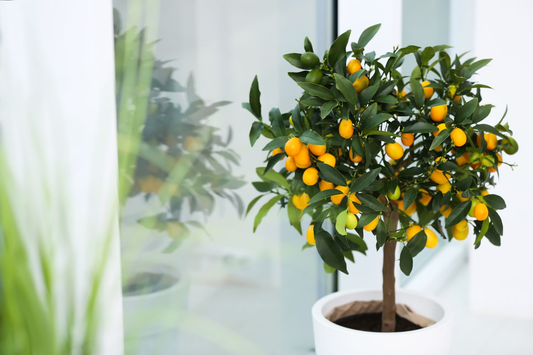Buy Native Seeds for Local Gardens
Share
- 1. Introduction
- 2. What Are Native Plants?
- 3. Benefits of Growing Native Plants in Local Gardens
- 4. Types of Native Plants to Buy for Your Garden
- 5. How to Choose Native Seeds for Your Garden
- 6. Where to Buy Native Seeds for Your Local Garden
- 7. Caring for Native Plants in Your Garden
- 8. Challenges When Growing Native Plants and How to Overcome Them
- 9. How Native Plants Contribute to Biodiversity and Conservation
- 10. How to Plan a Native Plant Garden
- 11. FAQ - Frequently Asked Questions
1. Introduction
Native plants are the backbone of local ecosystems, providing numerous benefits to gardens and the environment. By choosing native seeds for your garden, you're making an impactful decision for both the aesthetic value of your space and the sustainability of your landscape. Here's a closer look at the advantages of incorporating native plants into your local garden:
-
Overview of Native Plants:
- Native plants are species that naturally occur in a specific region or environment without human intervention.
- They are well-adapted to local climate conditions, including temperature, rainfall, and soil types.
- These plants have evolved to thrive in the local environment, making them low-maintenance options for your garden.
-
Benefits for Local Gardens:
- Reduced Maintenance: Native plants require less water, fertilizer, and pesticide, helping you create a low-maintenance garden.
- Better Adaptability: Since they are naturally suited to the local environment, native plants are resilient to pests and diseases.
- Increased Aesthetic Value: Native plants often have beautiful flowers, unique textures, and vibrant colors, making them an excellent choice for landscaping.
- Water Conservation: Native plants typically require less water once established, making them an eco-friendly option for areas with water scarcity.
-
Importance of Selecting Native Seeds:
- When you buy native seeds, you are supporting the preservation of local plant species.
- Native seeds are often more resilient than non-native varieties, as they have adapted over time to local soil and climate conditions.
- Growing from seeds offers the chance to cultivate a diverse range of native plants, which are often hard to find as mature plants in stores.
-
Contributions to Biodiversity and the Environment:
- Support for Local Wildlife: Native plants provide essential food and shelter for pollinators, birds, and other wildlife.
- Restoration of Local Ecosystems: By choosing native species, you are helping restore natural habitats that have been degraded by invasive plants.
- Climate Resilience: Native plants contribute to a more resilient environment by supporting ecological balance, improving soil health, and reducing erosion.
Incorporating native plants into your local garden is an easy and effective way to improve the health and beauty of your landscape while supporting the natural environment. By selecting native seeds, you’re making a positive impact on both your garden and the local ecosystem.

2. What Are Native Plants?
Native plants are those species that naturally grow in a specific area without human intervention. These plants are perfectly suited to their local environment, having evolved alongside the local climate, soil, and wildlife. Understanding what makes a plant "native" is key to selecting the right species for your garden and ensuring its success. Let’s break down the concept:
-
Definition of Native Plants:
- Native plants are plants that have grown in a particular region for thousands of years, adapting to the local soil, weather, and wildlife.
- They require fewer resources, such as water and fertilizers, compared to non-native species because they are naturally adapted to the local environment.
-
Geographic Scope: Native Plants for Your Specific Region or Climate:
- Native plants are specific to certain regions, climates, and ecosystems. What is native to one area may not be native to another.
- It’s important to choose native plants that match the climate and soil conditions of your area, such as plants that thrive in your USDA Hardiness Zone or local climate zone.
- For example, plants native to coastal regions may not do well in desert or mountainous climates, so choosing region-appropriate plants ensures optimal growth.
-
Difference Between Native and Non-Native Plants:
- Native Plants: These species are naturally found in a particular area, requiring fewer inputs to thrive and supporting local wildlife and ecosystems.
- Non-Native Plants: These plants are introduced from other regions and may require more care, such as additional watering, fertilizers, and pest control. They can sometimes outcompete native species, disrupting local ecosystems.
3. Benefits of Growing Native Plants in Local Gardens
Growing native plants in your local garden not only enhances the beauty of your landscape but also offers a wide range of environmental, economic, and aesthetic benefits. Here's how incorporating native plants can positively impact your garden and community:
-
Environmental Benefits:
-
Conservation of Water:
- Native plants are adapted to the local climate and soil, meaning they require less water to thrive.
- Once established, they are drought-tolerant and can withstand periods of little rainfall, helping conserve precious water resources.
-
Support for Local Wildlife and Pollinators:
- Native plants provide essential food, shelter, and nesting sites for birds, insects, and other wildlife.
- They are particularly important for pollinators like bees, butterflies, and hummingbirds, which rely on native flowers for nectar and pollen.
- By planting native species, you help maintain local biodiversity and promote the health of local ecosystems.
-
Reduced Need for Pesticides and Fertilizers:
- Native plants are naturally resistant to pests and diseases that affect non-native species, reducing the need for chemical pesticides.
- Since native plants are well-suited to the local soil, they typically require fewer fertilizers, contributing to healthier soil and reduced runoff into nearby waterways.
-
Conservation of Water:
-
Economic Benefits:
-
Lower Maintenance Costs:
- Native plants require less care and maintenance, which means lower costs for watering, pruning, and pest control.
- They are more resistant to local pests and diseases, reducing the need for costly treatments or replacements.
-
Fewer Resources Needed:
- Native plants are naturally adapted to their environment, meaning they require fewer resources like fertilizers, soil amendments, and pesticides to thrive.
- By reducing reliance on these inputs, gardeners can save money and reduce their environmental impact.
-
Lower Maintenance Costs:
-
Aesthetic and Cultural Value:
-
Enhancing Local Landscape Beauty:
- Native plants often have unique colors, textures, and forms that can enhance the overall beauty of your garden.
- They add seasonal interest, with flowers, fruits, and foliage that change throughout the year.
-
Honoring Local Heritage:
- By growing native plants, you’re preserving the natural heritage of your region and promoting local culture through the use of traditional plant species.
- In many cases, native plants are part of the history of the land, representing a connection to the area’s cultural and ecological past.
-
Enhancing Local Landscape Beauty:

4. Types of Native Plants to Buy for Your Garden
Choosing the right native plants for your garden can transform your outdoor space into a thriving ecosystem. Here’s an overview of different types of native plants and their roles in your garden:
-
Wildflowers:
- Wildflowers are some of the most colorful and beneficial native plants you can grow in your garden. They attract pollinators like bees, butterflies, and hummingbirds, enhancing biodiversity.
- Common choices for wildflowers include Black-eyed Susan, Echinacea, and Purple Coneflower.
- Wildflowers are perfect for sunny areas and can thrive with minimal care once established.
-
Shrubs:
- Native shrubs offer essential benefits like erosion control, winter interest, and shelter for local wildlife.
- Popular native shrubs include American Beautyberry, Ninebark, and Serviceberry.
- These shrubs can be used in borders, hedgerows, or as focal points in your garden design.
-
Trees:
- Native trees are important for providing shade, habitat for birds, and a sense of permanence to your garden.
- Great choices include Red Maple, Oak, and Dogwood, which all offer distinct seasonal beauty and are ideal for larger gardens or backyards.
- Trees help manage stormwater and improve the overall health of your garden by reducing soil erosion and providing windbreaks.
-
Groundcovers:
- Low-growing plants, like native groundcovers, are excellent for covering soil, preventing erosion, and maintaining soil moisture.
- Examples include Creeping Jenny, Wild Ginger, and Virginia Creeper.
- Groundcovers are particularly useful for shady areas or spots where you want to minimize weed growth.
-
Grasses and Ferns:
- Native grasses and ferns add texture and variety to your garden, providing movement and interest throughout the year.
- Examples include Little Bluestem and Ostrich Fern, which are both drought-tolerant and perfect for low-maintenance garden areas.
- Grasses and ferns are especially valuable in creating naturalistic gardens and enhancing local ecosystems.
| Type of Plant | Common Native Varieties | Benefits | Ideal Garden Type |
|---|---|---|---|
| Wildflowers | Black-eyed Susan, Echinacea, Purple Coneflower | Attracts pollinators, adds color | Sun-drenched areas |
| Shrubs | American Beautyberry, Ninebark, Serviceberry | Erosion control, winter interest | Border, hedgerows |
| Trees | Red Maple, Oak, Dogwood | Shade, habitat for birds | Large gardens, backyards |
| Groundcovers | Creeping Jenny, Wild Ginger, Virginia Creeper | Prevents soil erosion, low-maintenance | Shady areas |
| Grasses/Ferns | Little Bluestem, Ostrich Fern | Adds texture, drought-tolerant | Low-maintenance areas |
Each type of native plant serves a specific function in your garden, contributing to the overall health, beauty, and sustainability of the space. By choosing the right plants for your needs, you can create a garden that thrives with minimal effort and supports local wildlife and ecosystems.
5. How to Choose Native Seeds for Your Garden
When choosing native seeds for your garden, several important factors must be considered to ensure the plants thrive in your local environment. Here’s what to keep in mind:
-
Considerations for Selecting the Right Native Seeds:
- Soil Type: Different native plants have specific soil requirements. Some thrive in well-draining sandy soils, while others prefer loamy or clay soils. Make sure to check the soil type of your garden before purchasing seeds.
- Moisture Levels: Native plants vary in their water needs. Some are drought-tolerant, while others require moist conditions. Choose seeds that are suitable for the natural moisture levels of your garden.
- Sunlight: Assess how much sun your garden receives throughout the day. While some native plants prefer full sun, others thrive in partial shade or even full shade.
-
Climate Zone and USDA Hardiness Zones:
- Understanding your climate zone is crucial when selecting native seeds. The USDA Hardiness Zones map is a great tool to help you determine which plants are best suited for your location.
- Each plant has a specific hardiness range, meaning it will only thrive in certain temperature ranges. Make sure the seeds you choose are adapted to your climate’s average low temperatures.
-
Seed Source:
- Reputable Local Nurseries: Local nurseries are often the best source for native seeds. They carry plants that are well-adapted to your region’s specific conditions.
- Online Sources: Many online nurseries offer native seeds, but be sure to choose those that specialize in native plants. Always verify the source's reputation to avoid invasive species or non-native varieties.
-
Seeds vs. Plants:
-
Buying Seeds:
- Pros: Seeds are more affordable than fully grown plants, and they allow you to grow a wide variety of plants from the start. Plus, they give you the satisfaction of nurturing the plant from its early stages.
- Cons: Starting from seeds requires patience, proper care, and time. Seeds also require a longer growing period before reaching maturity.
-
Buying Fully Grown Plants:
- Pros: You get immediate results with established plants that are ready to grow in your garden. They also have a better chance of survival because they’re already adapted to their environment.
- Cons: Fully grown plants are more expensive and don’t offer the same level of variety and customization as seeds.
-
Buying Seeds:

6. Where to Buy Native Seeds for Your Local Garden
Finding the right source for native seeds is crucial to ensuring your garden thrives. Here are some great places to consider when purchasing native seeds for your local garden:
-
Local Nurseries and Garden Centers:
- Advantages of Supporting Local Businesses: Shopping at local nurseries supports the community, and they often provide plants that are better suited to your local conditions. You’ll also get expert advice from staff familiar with local gardening challenges.
- Local Knowledge: Staff at local nurseries have first-hand experience with the climate and soil conditions, which can be invaluable in helping you select the best plants for your garden.
- Instant Purchase: Local businesses allow you to purchase seeds in person, giving you the opportunity to inspect the products before buying.
-
Online Seed Retailers:
- Top Websites for Buying Native Seeds: Many reputable online retailers offer native seeds with a wide selection. This option is perfect for those who want variety or specific species not available locally.
- Convenient Shopping: You can shop from the comfort of your home and have the seeds delivered directly to your doorstep.
- Considerations: Be mindful of shipping costs and whether the seeds are appropriate for your region. Not all online retailers offer region-specific native seeds, so research is important.
-
Seed Swaps and Exchanges:
- Community-Based Options: Seed swaps are a great way to exchange seeds with fellow gardeners in your community. This is a low-cost option, and it helps promote local biodiversity.
- Considerations: The variety of seeds available depends on what other people have to trade. There may be no guarantees of seed quality or availability, so it’s important to inspect seeds carefully before trading.
Here’s a quick comparison of the different sources for buying native seeds:
By choosing the right source based on your needs, you’ll have access to high-quality native seeds that are perfect for your local garden.
7. Caring for Native Plants in Your Garden
Once your native plants are in the ground, proper care will help them thrive. Native plants are often low-maintenance, but understanding their specific needs can ensure they grow healthy and vibrant. Here are some key aspects of caring for native plants in your garden:
-
Soil Preparation:
- Ideal Soil Types: Native plants are adapted to thrive in the soil types of their native habitats. Many native species prefer well-drained soil, while others might thrive in more acidic or clay-rich soils. It’s important to research the specific needs of the plants you’ve chosen.
- Soil Amendments: While native plants are usually adapted to local soils, you may need to amend the soil with organic matter to improve its texture and fertility, especially in areas with compacted or poor soils.
-
Watering Requirements:
- Amount of Water Needed: Native plants are typically more drought-tolerant once established, as they are adapted to local rainfall patterns. However, newly planted natives will need regular watering until they are established (usually the first growing season).
- Watering Tips: Deep watering is preferred over frequent shallow watering, as it encourages deep root growth. Consider using a drip irrigation system or watering at the base of plants to avoid wasting water.
-
Pruning and Maintenance:
- When to Prune: Many native plants require minimal pruning, but occasional trimming helps maintain their shape and remove dead or damaged growth. Pruning is typically done after flowering or in late winter before new growth begins.
- Maintaining Health: Deadheading (removing spent flowers) is also a good practice for many native plants, as it encourages more blooms and prevents self-seeding in some species.
-
Fertilization:
- Why Fertilization is Minimal: Native plants are adapted to poor soils and do not require much fertilization. In fact, too much fertilizer can harm native plants by promoting excessive foliage growth at the expense of flowers and fruit.
- Low-Maintenance Care Tips: If you feel fertilization is necessary, use a slow-release, organic fertilizer with a balanced ratio. Avoid chemical fertilizers, which can harm beneficial soil organisms.
-
Mulching and Weed Control:
- Mulching Benefits: Mulch helps retain moisture, keeps the soil cool, and suppresses weeds. A 2- to 3-inch layer of mulch around your plants can be very beneficial, especially during hot or dry periods.
- Weed Control: Native plants are often better at outcompeting weeds once established, but it’s important to keep the area around young plants free from invasive weeds. Hand weeding or using a hoe can help manage weeds early in the season.

8. Challenges When Growing Native Plants and How to Overcome Them
While native plants offer numerous benefits for local gardens, they are not completely without challenges. However, with the right knowledge and techniques, these issues can be managed effectively. Below are some common challenges and how to overcome them:
-
Pests and Diseases:
- Common Issues: Like any plants, native species are susceptible to pests and diseases. Common problems include aphids, caterpillars, and fungal infections.
- Natural Solutions: For pests, consider using organic treatments such as neem oil or insecticidal soap. Encourage natural predators, like ladybugs, to help control aphids. For fungal diseases, ensure proper spacing and air circulation around plants to reduce moisture buildup, which can promote mold growth.
-
Overcrowding:
- Managing Growth: Native plants are often vigorous and can spread quickly, potentially crowding out other plants. It’s important to research the mature size of each plant and plan your garden layout accordingly.
- Proper Spacing: Ensure adequate space between plants to allow for proper air circulation and growth. Regular thinning may be necessary to prevent overcrowding and maintain a balanced ecosystem.
-
Competition with Invasive Species:
- Invasive Threats: Invasive species can outcompete native plants for resources, often leading to the decline of native species. Common invasive plants include Japanese Knotweed and English Ivy.
- How to Manage: Regularly monitor your garden for invasive species and remove them promptly. Use mulch or groundcovers to suppress their growth. Consider planting native species that can outcompete invasives for space, such as tall grasses or shrubs.
-
Dealing with Changing Climates:
- Climate Change Impact: As climates change, some native plants may struggle with extreme temperature fluctuations, longer droughts, or more intense rainfall.
- Native Plant Adaptation: Many native plants are well-adapted to shifting climates, but it’s essential to choose varieties that are resilient to local climate challenges. Opt for drought-tolerant species or plants suited to your specific USDA Hardiness Zone.
9. How Native Plants Contribute to Biodiversity and Conservation
Native plants play a crucial role in enhancing biodiversity and promoting conservation efforts. By incorporating native species into your garden, you’re not just beautifying your space, but also contributing to the health of local ecosystems. Here's how native plants support biodiversity and conservation:
-
Supporting Local Ecosystems:
- Native plants are integral to local ecosystems, providing food and shelter for a variety of species. They form the foundation of the food chain by offering resources to insects, birds, and other wildlife.
- By growing native plants, you support the natural balance of your local ecosystem, which is essential for preserving local wildlife populations.
-
Creating Wildlife Corridors:
- Native gardens act as wildlife corridors, connecting fragmented habitats and allowing species to migrate more freely between areas.
- By planting native trees, shrubs, and groundcovers, you create corridors that provide essential habitat for birds, small mammals, and insects, especially in urban or suburban settings where natural habitats are limited.
-
Pollinator-Friendly Gardens:
- Pollinators such as bees, butterflies, and moths rely on native plants for nectar and habitat. By planting native species, you help ensure that these vital pollinators have the resources they need to thrive.
- Pollinator-friendly gardens contribute to the health of not just plants but entire ecosystems, promoting the reproductive success of both native plants and crops.
-
Conservation Benefits:
- Native plants are well adapted to local conditions, making them drought-tolerant and efficient in water use. This helps conserve water compared to non-native plants that may require excessive irrigation.
- By reducing the need for chemical fertilizers and pesticides, native plants also lower the environmental impact of gardening, contributing to the reduction of the carbon footprint.
10. How to Plan a Native Plant Garden
Planning a native plant garden requires careful consideration of plant needs, aesthetics, and the overall sustainability of your design. By following a few key principles, you can create a beautiful, low-maintenance garden that supports local wildlife and enhances the environment. Here's how to plan a native plant garden:
-
Designing Your Garden:
- Start by assessing your garden space, taking into account factors such as sunlight, soil type, and moisture levels. This will help you select the right plants for your garden's unique conditions.
- Group plants with similar needs together to ensure that each plant thrives. For example, place drought-tolerant species in sunny, dry areas and moisture-loving plants in shaded, damp spots.
-
Choosing the Right Combinations:
- Pair plants that complement each other in both appearance and ecological function. For example, tall grasses and wildflowers can be paired to create a layered look while providing shelter and food for insects and birds.
- Consider both aesthetic appeal and ecological balance—choosing plants that bloom at different times of the year and offer food and shelter to local wildlife.
-
Seasonal Interest:
- Select plants that offer interest throughout the year. Some native plants provide vibrant blooms in spring and summer, while others have beautiful fall foliage or provide winter interest with berries or bark.
- Incorporating evergreen shrubs or grasses can also provide structure and visual appeal even in the colder months.
-
Sustainability in Design:
- Create a garden that is easy to maintain by focusing on plants that require minimal watering, fertilization, and pesticide use. This reduces the environmental impact of your garden.
- Consider using natural materials such as mulch or stone to reduce water evaporation and prevent soil erosion, promoting a more sustainable, eco-friendly design.
11. FAQ: Frequently Asked Questions
Here are answers to some common questions about native plants and how to successfully grow them in your local garden:
-
Are native plants more expensive than non-native plants?
- Native plants can be slightly more expensive due to their limited availability and specialized cultivation methods. However, over time, they can save money because they require less water, fewer fertilizers, and are more resilient to pests.
-
Can native plants survive in containers or only in the ground?
- Many native plants can thrive in containers, especially those with smaller root systems. Choose plants that are well-suited for container gardening, such as wildflowers or small shrubs, and ensure the container has proper drainage.
-
How long does it take for native plants to mature?
- Native plants generally take longer to mature compared to non-native species. Depending on the type, it can take anywhere from one to five years for native plants to reach full maturity and establish themselves in the landscape.
-
Are there any specific native plants that work well for beginners?
- Yes! Easy-to-grow native plants include Black-eyed Susan, Purple Coneflower, and Butterfly Weed. These plants are hardy, require minimal care, and provide beauty and wildlife benefits.
-
What is the best time of year to plant native seeds?
- The best time to plant native seeds is typically in the fall or early spring. Fall planting allows seeds to undergo natural cold stratification, while spring planting should be done after the last frost for optimal germination.
-
Can native plants tolerate drought conditions?
- Many native plants are well adapted to drought conditions, especially those native to arid regions. However, it's important to select drought-tolerant species and provide adequate water during their establishment period.
-
What are the best native plants for attracting pollinators?
- Plants like Purple Coneflower, Bee Balm, and Milkweed are excellent for attracting pollinators such as bees, butterflies, and hummingbirds. These plants provide nectar and habitat for essential pollinator species.
-
How do I handle pests in my native plant garden?
- Native plants are typically more resistant to pests due to their natural adaptation to the local environment. If pests do appear, consider natural solutions such as introducing beneficial insects, using organic insecticides, or removing pests manually.




